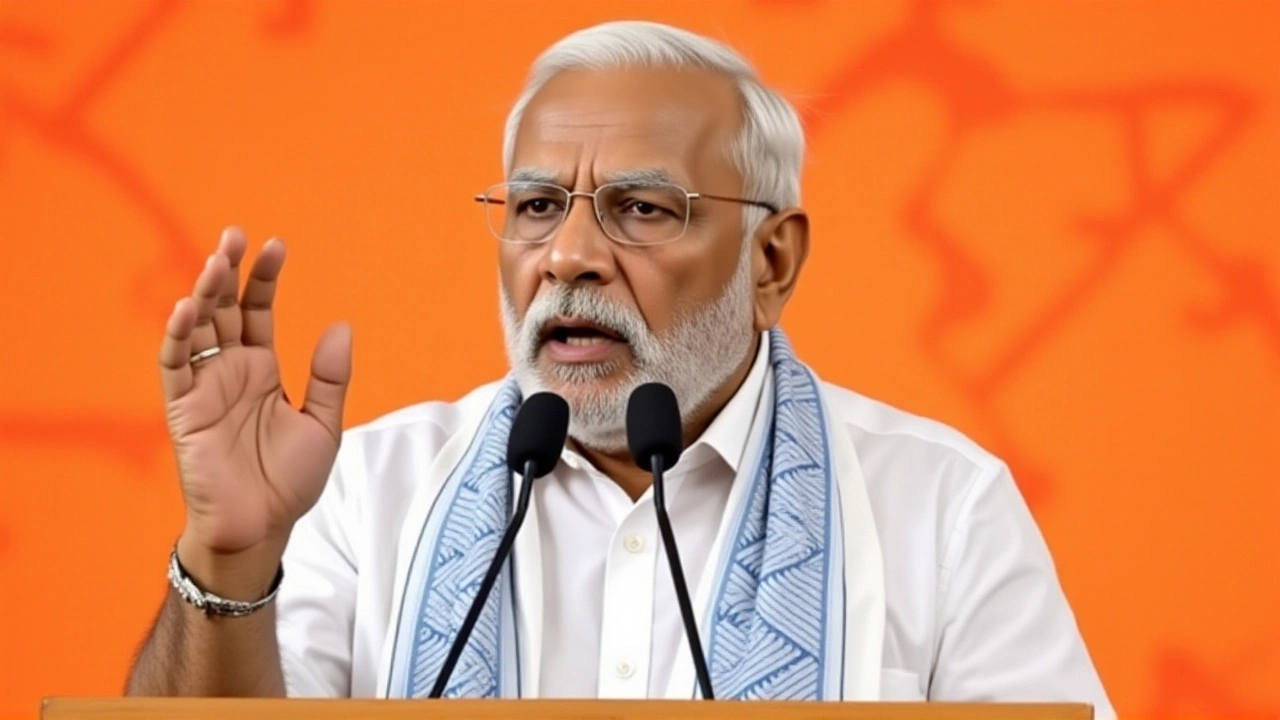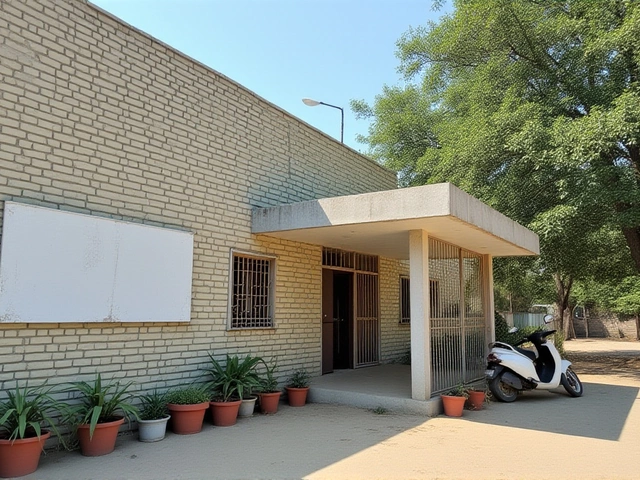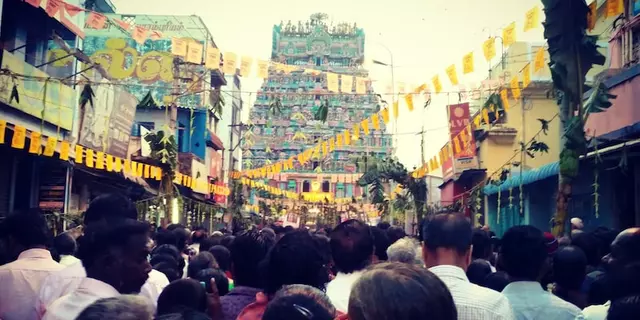When General Upendra Dwivedi, Chief of the Army Staff of the Indian Army, stood on the deck of the newly commissioned INS Mahe in Mumbai on November 24, 2025, he didn’t just celebrate a warship — he unveiled a new chapter in India’s defense identity. The vessel, the first of its Mahe-class anti-submarine warfare shallow water craft, carries 80% indigenous content — from its sonar systems to its propulsion — and, as Dwivedi put it, is a ‘silent hunter’ designed to stalk submarines in the Indian Ocean’s coastal shallows. But the real story wasn’t just steel and sensors. It was synergy. And that synergy, he said, had already been proven in the skies and shadows of Operation Sindoor.
Operation Sindoor: A Watershed Moment
Operation Sindoor wasn’t just a military strike. It was a signal. On May 7, 2025, India launched precision missile strikes targeting terror infrastructure in Pakistan, zeroing in on training camps linked to Jaish-e-Mohammed and Lashkar-e-Taiba. The trigger? The April 2025 Pahalgam attack in Jammu and Kashmir, where militants killed civilians at a pilgrimage site. In response, Indian forces didn’t just retaliate — they coordinated. The Army, paramilitary units, and Jammu and Kashmir Police ran a joint cordon-and-search operation across the Pir Panjal range. Helicopters scouted ridges. Ground troops demolished homes of suspected operatives. On April 24, XV Corps reported killing two insurgents attempting to infiltrate near Uri. The operation wasn’t isolated — it was synchronized.Then came the diplomatic hammer. On April 23, 2025, Foreign Secretary Vikram Misri announced India was suspending the Indus Waters Treaty — a 70-year-old agreement governing river sharing — and shutting the Attari-Wagah border. Pakistani nationals were barred from entering India. Visas revoked. It was the most aggressive diplomatic posture India had taken since 2019. Skirmishes flared along the Line of Control between April 24 and May 5, with both sides trading fire and claiming drone downings. The world watched. But inside India’s command centers, the message was clear: this was no longer about isolated responses. It was about integrated deterrence.
The Silent Hunter and the New Defense Ethos
INS Mahe, commissioned at the Naval Dockyard in Mumbai, is more than a ship. It’s a statement. Built by Goa Shipyard Limited with systems designed by DRDO and private Indian firms like Larsen & Toubro, it carries no foreign sensors, no imported sonar domes. Its stealth profile, shallow draft, and quiet electric propulsion make it ideal for coastal defense — a role once dominated by foreign vessels. General Dwivedi called it ‘a symbol of self-reliance,’ but he didn’t stop there. ‘In the era of multi-domain operations,’ he said, ‘the nation’s ability to operate in unison, from the depths of the ocean to the highest frontier, will shape the security influence of the Indian Republic.’That’s the shift. No longer is the Army, Navy, and Air Force operating in silos. Operation Sindoor proved that. Air Force drones located targets. Army intelligence fed them. Navy satellites relayed coordinates. The strike was executed by the Air Force’s BrahMos-equipped Su-30s, but the targeting came from ground units working with cyber and signals intelligence. It was joint. It was fast. And it worked.

Political Echoes and Digital Distractions
The political fallout was immediate. Prime Minister Narendra Modi, campaigning in Bihar, declared Operation Sindoor had ‘given them sleepless nights’ — a direct jab at the Congress party’s leadership. Maharashtra Chief Minister Devendra Fadnavis went further, saying India ‘missed an opportunity’ after the 2008 Mumbai attacks. ‘We should have acted like this then,’ he told reporters. The rhetoric was sharp, but it wasn’t just politics. It was branding — turning a military operation into a national narrative of strength.But the narrative was also being manipulated. On November 19, a deepfake video surfaced showing actress Aishwarya Rai Bachchan confronting Modi during the Sri Sathya Sai Baba centenary in Puttaparthi. The video, featuring AI-generated voice and facial movements, spread across WhatsApp and X. It was debunked within hours, but not before it sparked outrage. The incident underscored a new battlefield: information. And just like Operation Sindoor, India’s response had to be multi-domain — intelligence, media, and tech teams working in lockstep to neutralize the falsehood.
What Comes Next?
The Indian military is now on a 10-year transformation plan called ‘Integrated Theatre Commands.’ INS Mahe is the first of 12 Mahe-class vessels scheduled for delivery by 2030. The Army is rolling out new rapid-reaction brigades. The Air Force is integrating AI into its air defense networks. And the Navy? It’s building a fleet designed not just to fight — but to deter.There’s a quiet confidence now. Not bravado. Not hype. Just the understanding that when the Army, Navy, and Air Force act as one — when indigenous tech meets joint doctrine — India doesn’t just defend its borders. It reshapes the regional balance.

Behind the Scenes: The Real Cost of Sovereignty
The $2.3 billion spent on INS Mahe’s class? That’s not just a budget line. It’s the result of 14 years of failed import deals, delayed tech transfers, and bureaucratic delays. The breakthrough came when India’s Defense Research and Development Organisation (DRDO) partnered with 17 private Indian firms — from small electronics startups in Bengaluru to shipbuilders in Kochi. The result? 80% indigenous. And that number? It’s rising. The next class of vessels will hit 92%.Meanwhile, the human cost of Operation Sindoor remains murky. Pakistan claims 31 civilians died, including women and children, in strikes on what it called ‘residential areas.’ India maintains all targets were militant facilities. Independent verification is impossible — no journalists were granted access to the strike zones. But for Indian troops on the ground, the message was simple: ‘We don’t wait for the next attack. We end it before it begins.’
Frequently Asked Questions
How did Operation Sindoor change India’s military doctrine?
Operation Sindoor marked the first time India executed a cross-domain strike using synchronized Army, Air Force, and Navy assets — from ground intel to satellite targeting to missile launches — all within 72 hours. It validated the shift from service-specific commands to joint operational theaters, accelerating the rollout of India’s new Theatre Commands. This isn’t just about weapons — it’s about command culture.
Why is INS Mahe’s 80% indigenous content significant?
For decades, India relied on imported sensors, sonars, and propulsion systems, making maintenance costly and supply chains vulnerable. INS Mahe’s 80% indigenous build — including its combat management system developed by DRDO and hulls forged in Goa — means repairs can happen locally, upgrades are faster, and foreign suppliers can’t be used as leverage. It’s a strategic pivot from dependence to autonomy.
What role did diplomacy play before Operation Sindoor?
Before the strikes, India severed the Indus Waters Treaty, closed the Wagah border, and banned Pakistani visas — a rare, coordinated diplomatic offensive. These moves weren’t just symbolic; they disrupted Pakistan’s economic lifelines and isolated it internationally. The military action followed a clear diplomatic escalation, showing India now uses all tools — not just force — to respond to terror.
How did deepfakes impact public perception of Operation Sindoor?
The deepfake video of Aishwarya Rai Bachchan confronting Modi was designed to sow doubt and distract. Though debunked quickly, it revealed how misinformation could weaponize celebrity culture to undermine national narratives. India’s response — involving CERT-In, social media monitoring units, and media literacy campaigns — signaled a new focus on information warfare as a frontline defense.
Is Operation Sindoor a precedent for future conflicts?
Absolutely. The operation’s speed, precision, and joint execution set a template. Future responses — whether against terror networks in Nepal’s Terai or maritime threats in the Andaman Sea — will likely follow the same model: diplomatic pressure first, intelligence fusion second, and surgical strikes third. It’s no longer about retaliation. It’s about pre-emptive deterrence.
What’s next for India’s indigenous defense industry?
By 2030, India plans to have 150+ defense systems with over 85% indigenous content, including fighter jets, submarines, and missile systems. The success of INS Mahe has already spurred orders for 12 more vessels, and private firms like Tata Advanced Systems and Mahindra Defence are now bidding for next-gen projects. The goal isn’t just self-reliance — it’s becoming a global defense supplier.






